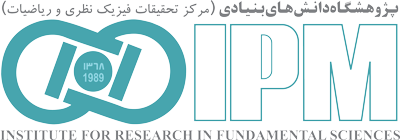“School of Cognitive”
Back to Papers HomeBack to Papers of School of Cognitive
| Paper IPM / Cognitive / 18237 |
|
||||||||||
| Abstract: | |||||||||||
|
Objectives: Theory of mind (ToM), or mentalizing, is the ability to attribute mental states to oneself and others and is altered in individuals with autism spectrum disorder (ASD). Recent evidence suggests that implicit rather than explicit ToM is impaired in individuals with ASD. The right temporoparietal junction (rTPJ), which plays a crucial role in ToM, has altered activity in ASD and is a potential terget by noninvasive brain stimulation.
Materials and methods: In a randomized single-blind placebo-controlled study, we investigated, for what we believe is the first time, the effects of theta-burst stimulation of the rTPJ on implicit ToM and egocentric bias in 17 adolescents with ASD. Participants (mean age = 13.84 ñ 3.32 years) were randomly assigned to three sessions of continuous theta-burst stimulation (cTBS), intermittent theta-burst stimulation (iTBS), and sham stimulation in a counterbalanced order. Stimulation intensity was set to 80% of the active motor threshold during cTBS and iTBS, with the coil centered on the rTPJ (CP6). Immediately after each stimulation, cognitive correlates of ToM, including implicit mentalizing and egocentric bias, were evaluated using the computerized Buzz-lightyear task.
Results: Both cTBS and iTBS significantly improved implicit ToM compared with sham stimulation, with cTBS yielding a numerically larger effect (379.2 milliseconds) than did iTBS (191.3 milliseconds), although this difference was not statistically significant. No effect was found on the egocentric bias index.
Conclusions: These findings show a causal link between the rTPJ activation and implicit mentalizing in ASD, suggesting that theta-burst stimulation of this region can be used to enhance ToM in ASD. Targeting the rTPJ may improve implicit mentalizing in ASD and other disorders with impaired ToM.
Download TeX format |
|||||||||||
| back to top | |||||||||||



















